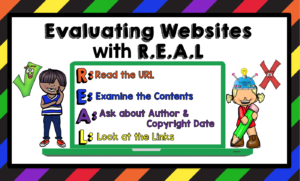
Teaching students how to evaluate websites and determine whether they are reliable to use is an important skill, especially these days with the vast amount of information on the internet. While there are many different acronyms that can be used to help kids remember how to check the validity of a website, I like to use the R.E.A.L. method.
To teach it for the first time, I tell students that I heard about a new animal that is in danger. I make a point of opening a Google search page on the projector for them to see, and explain that I can type in “Mountain Walrus” in the search box. I show them that the first website at the top of the search results was the one I had read, (http://www.hmssurprise.org/Miscellany/walrus.php), and the one I wanted to share with them.
Here’s what I did with 3rd grade:
I gave third graders a few minutes to look over the article in partners. Then I had everyone come back together to share things they learned about the Mountain Walrus. Then I asked the kids, “What do you think we can do to help?” and immediately I got suggestions such as:
“We can make posters and tell other people about how it’s in danger.”
“We can tell our parents and see if they can help.”
“We can get a law passed so it’s illegal to hunt them.”
“We could move them to a protected area where their habitat will be safe.”
At this point, I asked them, “Did anyone question whether this article was giving us reliable information?” Things quickly got quiet. I then asked, “Do you think we need to research Mountain Walruses a little more and double check this website before we start sharing information about them?” They were quiet, and then someone spoke up and asked “So Mountain Walruses aren’t real?!” I responded “I don’t know…but should we do something to find out for sure before we share this information with others?” They all agreed.
First, I went back to the Google search page and typed in “Mountain Walrus“. I asked them, “Did you know that Google has an ads program where you can pay for your website to appear at the top of the search results? But, what you have to remember is that doesn’t mean that the website is reliable.” I tell them to think about the Google search box as a door into a huge warehouse. When you type a search request, you are walking through the door. Inside the warehouse there are diamond rings (very reliable websites with great, factual information), but there are also plastic rings (websites that are not filled with facts or have misleading information.)
At this point, I introduced the concept of “R.E.A.L.” using the posters.

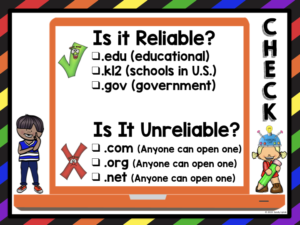
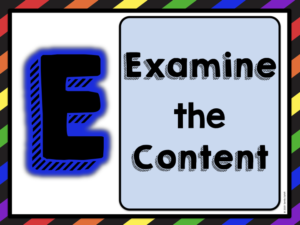
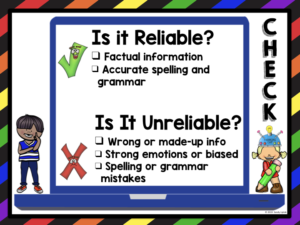
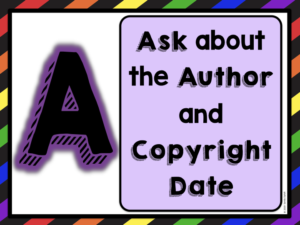
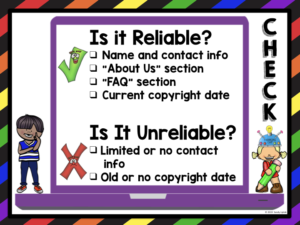
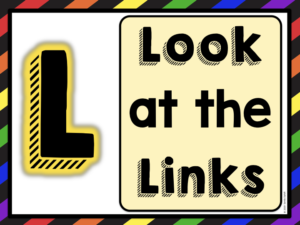
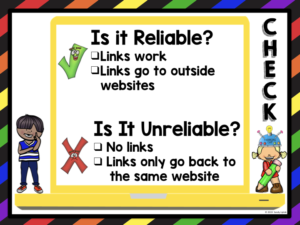
We went through each one, putting green checkmarks if the Mountain Walrus website met reliable criteria, and red tally marks if there were any unreliable criteria. We used our school’s databases to look up Mountain Walruses, to see if we could verify the information from the article. Unfortunately, we were not able to find any mention of the animal. This, combined with all the other red checkmarks, helped the kids determine this was NOT a website to trust.

I also created a PowerPoint Slideshow to review the information and then handed them a bookmark to take with them.
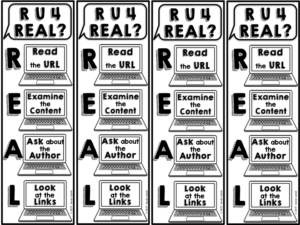
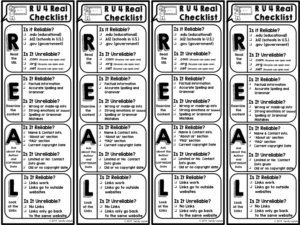
Here’s what I did with 4th grade:
With 4th grade, I did a shortened version of the Mountain Walrus lesson, and then gave them each student a bookmark. They worked in pairs, using the checklist, to try and determine if the websites were reliable or not. Before they left, I had them share their evidence on whether the websites were reliable or unreliable.
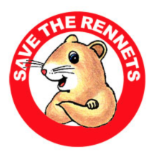
Save the Rennets at http://savetherennets.com/

Whale Sightings at https://www.northshorevisitor.com/activities/whale-watching/
Here’s what I did with 5th grade:
I started out with a condensed version of the Mountain Walrus lesson that I did in 3rd grade, and then I handed out this activity page to pairs of students.
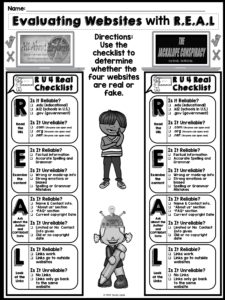
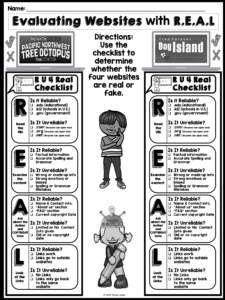
With their parter, they investigated four different websites to determine if they were reliable resources. The 4 websites I used were:

- Tree Octopus here at https://zapatopi.net/treeoctopus/

2. All About Explorers: Christopher Columbus at https://www.allaboutexplorers.com/explorers/columbus/

3. Dog Island at http://www.thedogisland.com/

4. The Jackalope Conspiracy at http://www.sudftw.com/jackcon.htm
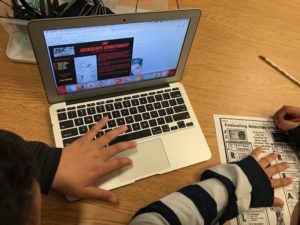
After about 20 minutes, I had them come back together to share their findings, but they were having so much fun and didn’t have enough time to get to all 4 websites that we decided to continue on their next visit.
Surprisingly, no one spoiled anything and when they came back the following week, they finished investigating and marked their evidence on the checklist criteria. As we discussed their findings, I reminded them to use reliable sources, like our databases, to verify information they find on the internet or social media before sharing.
At the end of our time, I inevitably get the question, “So…which websites were fake?!” My response is always “Well, after our lessons, you SHOULD be able to tell me!” This gets groans from some, and chuckles from others. (By the way, all four websites are fake!) LOL 🙂
If you’d like to do this activity with your kids, you can find it here on my website or at my TpT store.
I hope you find this useful! Don’t forget to share any other activities you do with students to help them learn how to evaluate websites!













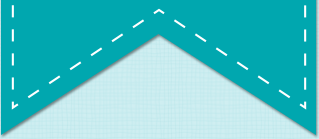

Thanks so much for this lesson idea, it’s great!
How can I get real posters, bookmarks, and powerpoint? I want to do this lesson.
Hi Darlene, You can find this activity at my TPT store here at: https://www.teacherspayteachers.com/Product/Evaluating-Websites-With-REAL-4439332
Hope this helps! 🙂
Sandy
I LOVE this! I am a school librarian but am in between emails, lol! I am happy to purchase the resources as well! such a fun, effective lesson!!
I am so happy you love the lesson! Have a great summer!
Hello, I’m a Librarian who’s new to teaching. I just took a job as a Long Term Substitute Teacher in the Media Center of an Elementary school. I have been working in the Corporate world, doing some indexing, so teaching is brand new. I am struggling to find entertaining lessons. I have found the Common Sense.org videos but that’s about it. This lesson is Adorable – It was a Huge hit !! Please send me any ideas that you have, I would love to chat with you. Thanks so very much !! Erika 646-554-8623
Hi Erika! Have you taken a look at Sandy’s Teacher Pay Teachers site? She has a ton of fabulous lesson ideas!
https://www.teacherspayteachers.com/store/lessons-by-sandy
Thanks for reaching out!